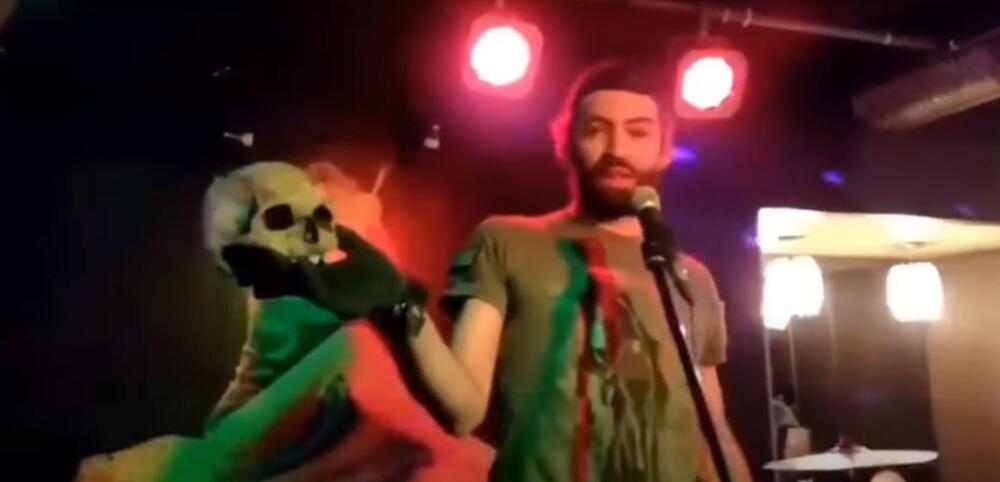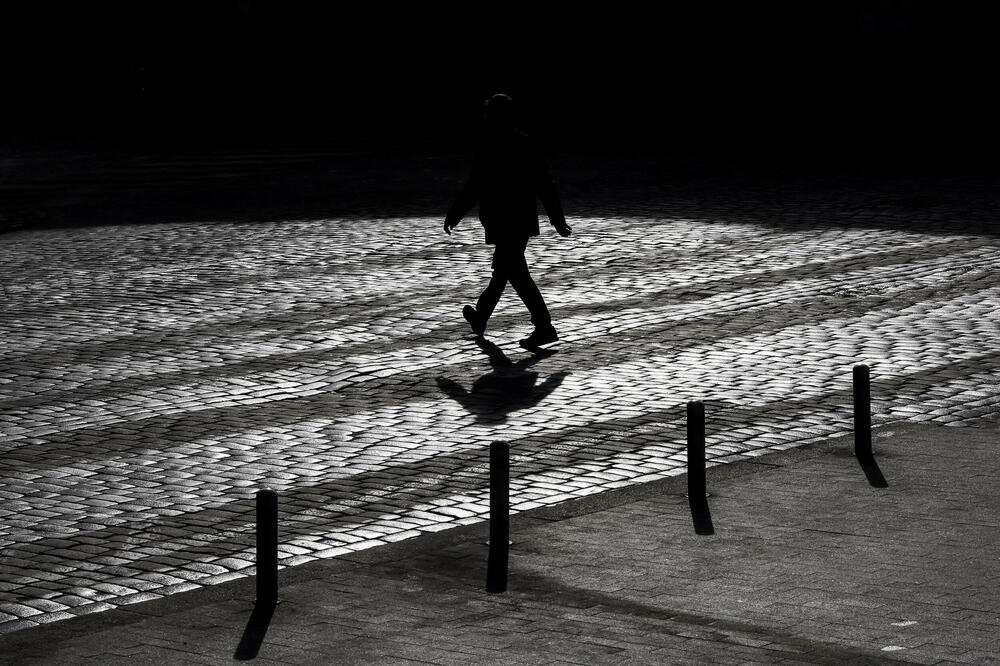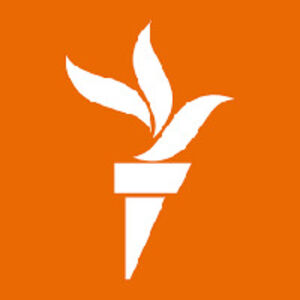In the early days of Russia's invasion of Ukraine, as Moscow's forces advanced toward Kiev, internet photos of crosses painted on Ukrainian infrastructure spread fears of potential Russian missile attacks.
Almost two years later, the question remains whether those crosses were real and, if so, who drew them and why, the editorial office writes. Radio Free Europe (RSE) in English.
Sometimes it was red Celtic cross on the road or on the roof of a residential building, sometimes a miniature black cross on gas pipeline or the sign on the substation.
Research by Systema, the investigative unit of the Russian service of the RFE/RL, has revealed that behind at least some of the images is a disinformation campaign by Russian ultranationalists on social networks with the aim of "paralyzing" Ukrainian emergency services and law enforcement during the war.
In the early days of Russia's invasion of Ukraine, as Moscow's forces advanced toward Kiev, internet photos of crosses painted on Ukrainian infrastructure spread fears of potential Russian missile attacks.
Almost two years later, the question remains open as to whether those crosses were real and, if so, who drew them and why, writes the editorial office of Radio Free Europe (RSE) in English.
Sometimes it was a red Celtic cross on the road or on the roof of a residential building, sometimes a miniature black cross on a gas line or a sign on a substation.
Research by Systema, the investigative unit of the Russian service of the RFE/RL, has revealed that behind at least some of the images is a disinformation campaign by Russian ultranationalists on social networks with the aim of "paralyzing" Ukrainian emergency services and law enforcement during the war.
In the first year of the Russian invasion, about half of the 50.000 messages a Ukrainian government chatbot received about Russian military movements referred to those crosses, according to Ukraine's Cyber Police Department of the National Police, which operates the bot.
Journalists found no concrete evidence that the crosses were the work of the Russian Military Intelligence Service, known as the GRU. But both the Security Service of Ukraine (SBU) and the Ministry of Internal Affairs have asked Ukrainians to cover up any such markings if they see them.
The earliest social media post about the markings appeared on February 24, 2022, the first day of the invasion, in the official Facebook group for Novhorodka, a city in Kirovohrad province about 340 kilometers southeast of Kyiv.
The two photos showed green and red crosses, each with a circle in the middle, painted on the highway and a section that Systema geolocated as an additional lane of the highway near Novhorodka.
The title describes the markings as "for the landing of enemy paratroopers" and advises that they should be covered with earth, rubber or paint.
The secretary of the management of Novgorodka, Oleh Vjetrov, told Systema that he took photos of the red cross himself after users of social networks sent him photos of the crosses. He could no longer remember who these users were.
The people who painted the crosses were never found, although rumors circulated in the village of individuals in Toyota cars pulling up along local roads, Vjetrov said.
With a population of less than 6.000 people, the arable town of Novhorodka may not seem like a priority target for attacks, although Russian missiles have repeatedly hit the wider area during the invasion.
However, as Ukrainians across the country took cover from Russian rocket barrages amid a three-pronged invasion from the north, south and east, photos of other crosses began to circulate online.
The panic around the crosses lasted for three whole days. On February 27, 2022, on behalf of the military, Oleksiy Arestovych, the adviser to the Ukrainian president's cabinet at the time, pointed out that the crosses have no military purpose other than sowing chaos.
"Today's military equipment is not guided by road markings. It is guided by other modern technical means," Arestovic said at the briefing. "This practice (of drawing crosses) may have been started to cause spy mania among us."
For Russian ultranationalist Igor Mangushev, Arestovich's words heralded success: "Every distracted policeman means one less gun."
Every SBU officer who catches 'saboteurs' is one gun less," Mangushev wrote in a post on his Telegram channel Zapiski aventurista (Notes of an Adventurer) on February 27, 2022.
Mangushev introduced himself as a manager of disinformation, "part PR person, part political strategist, part soldier," as well as "a fraudster and mercenary," according to his biography on Telegram.
A fierce ultranationalist known for allegedly displaying the skull of a Ukrainian soldier at an August 2022 event in the Russian-occupied city of Donetsk, he fought in early 2014 against Ukrainian government forces in the Luhansk region. He allegedly had ties to individuals and forces ranging from the late Russian mercenary chief Yevgeny Prigozhin to the GRU.
As of February 2022, he was living in Beirut to avoid the risk of prosecution in Russia for the far-right movement he led, ENOT (Partnership of United Nations Communities). While in Lebanon, he organized rallies in support of Russia's war against Ukraine, including a rally attended by the Russian ambassador to Lebanon, Aleksandr Rudakov.
However, he sees "scandalous information campaigns" as his mission "not only as a way of making a living, but also as a hobby," he told the liberal Russian daily Novaya Gazeta in 2019.
A day after the start of the Russian invasion, on February 25, Mangushev called on "information war fighters" to sow "panic" among Ukrainians and organize "paralysis" of Ukrainian security agencies and emergency services by attacking the Ukrainian cyber-police bot and calling the SBU, Ministry of Internal Affairs and fire stations with false reports of saboteurs and artillery observers.
On February 26, Mangushev also urged his Telegram readers to call the Ukrainian Territorial Defense Forces from Ukrainian Internet phone numbers and inform them of "ballistic crosses."
Mangushev's widow, Tatjana Azarevich, said that these crosses were her husband's idea.
"The crosses, the flooding of emergency phone lines with fake calls, the bot attacks, the use of the Z symbol, it's all his doing. He tried to create maximum chaos," she told Systema in January.
Mangushev attributed the "chaos" approach to Russia's chief of staff, General Valery Gerasimov, and was eager to implement it, former associate Vladislav Ugolny told Systema, also in January. Ugolny, who is a blogger, said that rumors circulating in the region in 2014 about red jackets and T-shirts symbolizing support for the Ukrainian army inspired the red crosses.
"We projected the experience of Lugansk onto Kyiv," he said.
In his February 27, 2022 Telegram post, Mangushev scoffed at speculation that the campaign was overseen by "professionals from the GRU," or Russian military psychological operations.
Instead, on March 25, 2022, he claimed that "the creators of several Telegram channels and their subscribers" were responsible.
He attributed the idea to "a few drunk people from the media". The first such markings, he said in a June 6, 2022 article on the Russian website Ukraina.ru, were drawn by "our friends," described as "underage drug addicts," on the roof of a house in Moscow's Altufyevo district.
"Our volunteers broke into Ukrainian chat rooms and then distributed information about saboteurs who draw markers," he claimed.
How many people participated in such a campaign and what happened to them is unknown. When the invasion began, Mangushev's Telegram channel had fewer than 6.000 followers, according to TGStat, a service that analyzes Telegram traffic.
After Mangushev's violent death in 2023, numerous claims emerged about the origins of the crosses and ultranationalist connections. Prigozhin's former media adviser, Sergei Zagatin, claimed he was the co-creator of the crosses, while the Dossier Center, an investigative news outlet funded by exiled ex-oil tycoon Mikhail Khodorkovsky, a vocal critic of Putin, reported that the GRU colonel's "working documents" mentioned plans for a monthly payment of 4.000 euros to Mangušev for running a front organization of the GRU.
The Dossier Center report did not show official documents proving this particular claim, but did include related materials such as leaked emails from an alleged GRU officer.

Azarevich claimed that her husband organized the campaign by telephone only in the city of Kharkiv in eastern Ukraine. Ugolni, who said he did not work on the crosses, attributed their spread to "our supporters in Kyiv."
"It was nothing too complicated," he said. "They just put a series of tags."
In February and March 2022, Ukrainian media reported dozens of cases of detention for drawing crosses and symbols, but Ukrainian police sources told Systema that the police released those arrested after issuing a warning. Ukrainian court registry cases mostly involve fines or warnings, for example to parents of children who make mischief on the phone.
The exception is Katerina Bazikina (25), a native of the eastern Ukrainian mining town of Novokhrodivka. In August 2023, Bazikina was sentenced to 12 years in prison for treason and "prior conspiracies", including painting five crosses in Novokhrodivka on February 25, 2022 at the behest of a Russian soldier.
An appeals court in Dnipro later ruled that Bazikina's recruitment had not been proven, despite a police video in which she claimed a separatist fighter from Donetsk paid her 2.000 hryvnias (about 50 euros) for each tag.
Bazikina's case is now under review, although she is still in prison. Prosecutors claim that Bazikina submitted the photos through an Instagram intermediary.
The man she identified in the video for the role, a former neighbor, Vladislav Khmelevoy, however, dismissed as "complete nonsense" the claim that the Russian military recruited Bazikina to draw crosses.
"The world is now digital. To carry out an attack, it is enough to have an address, without crosses, or to have a photo with coordinates," Systemi Hmelevoj, who fought on the side of Russian-backed forces in the Donbass in early 2014, said in January. "I could identify any military facility without the help of recruiting (anyone)."
Claiming that "special services" shut down his Instagram account before 2023, he denied that he spoke with Bazikin on Instagram. He refused to answer the question whether he knew Mangušev.
Mangushev was killed in Ukraine in February 2023, when he was commanding an anti-drone unit during the Russian withdrawal from the city of Kadyivka in the Lugansk region.
The Russian Investigative Committee is still investigating the circumstances surrounding Mangushev's death from a gunshot wound to the head, not in combat, his widow said.
Regardless of whether he created them or not, the crosses are still there. Ironically, they were recently seen in Russia, on the streets of Moscow before the celebration of Victory Day in World War II in May 2023.
Bonus video:





